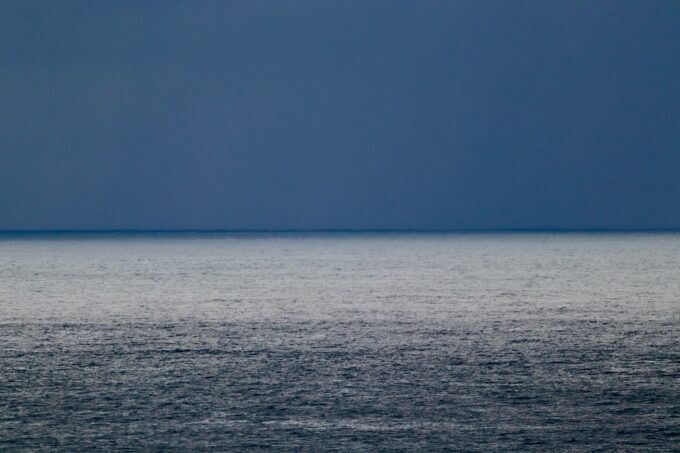
Pacific Ocean at Yaquina Head, Oregon. Photo: Jeffrey St. Clair.
In response to the increasing global demand for resources and the economic pursuits that come with it, attention on the world’s oceans continues to grow. But how should marine resources be properly managed? The blue economy is the umbrella term that looks at the planet’s oceans from an economic perspective and refers to the sustainable use of ocean resources for economic growth, improved livelihoods, and jobs while preserving the health of ocean ecosystems.
On one side of the coin are the exploitative activities and economic sectors, including fisheries, aquaculture, maritime transport, tourism, offshore renewable energy like wind and tidal power, and biotechnology. On the other side are marine conservation efforts.
Global platforms like the United Nations, the World Bank, the European Commission, the Commonwealth of Nations, and the Center for the Blue Economy have called for oceanic sustainability efforts.
In March 2024, the United Nations Environmental Assembly adopted a resolution on “strengthening ocean efforts to tackle climate change, marine biodiversity loss and pollution.” A press release issued by the European Commission after the session stated, “By submitting and negotiating the resolution, the European Union and its Member States reiterated their determination to play a leading role in protecting, conserving, restoring, and sustainably utilizing the world’s oceans.”
The concept of the blue economy is rooted in the recognition that the oceans are vital to human well-being and the global economy. Still, they are also threatened by overexploitation, pollution, and climate change. Therefore, the blue economy seeks to balance economic development with the need to protect and restore the ocean environment, ensuring that future generations can enjoy marine resources.
Fundamental principles of the blue economy include:
Sustainability: Ensuring ocean-related activities do not deplete resources or harm the environment.
Inclusive Growth: Promoting economic activities that benefit local communities and alleviate poverty.
Innovation: Encouraging the development of new technologies and practices that enhance productivity and sustainability in using ocean resources.
Governance: Implementing effective policies, regulations, and international cooperation to manage ocean resources responsibly.
The blue economy is increasingly seen as a crucial component of global efforts to achieve sustainable development and address climate change, particularly in coastal and island nations heavily dependent on marine resources.
Challenges in Defining the Blue Economy
There is no consensus on the definition of “blue economy.” The term generally refers to the purportedly “sustainable” economic activities associated with oceans, seas, and coastal waters. Yet, that’s where consensus on the concept breaks down. The blue economy requires a clear, widely agreed-upon definition before it can be applied appropriately.
The World Bank defines the blue economy as the “sustainable use of ocean resources for economic growth, improved livelihoods and jobs, and ocean ecosystem health.” The European Commission defines it as “[a]ll economic activities related to oceans, seas, and coasts. [It] covers a wide range of interlinked established and emerging sectors.”
According to the United Nations, the blue economy “comprises a range of economic sectors and related policies that together determine whether the use of ocean resources is sustainable” while emphasizing the need to protect life below the water. The Organization for Economic Co-operation and Development (OECD) stated thatthe blue economy applies to industries with “a direct or indirect link to the ocean, such as marine energy, ports, shipping, coastal protection, and seafood production.” The World Wildlife Fund acknowledges that there is no widely accepted definition.
Defining the blue economy is much more than semantics. Some people mistakenly believe that it has been intended to benefit capitalism. This is a widespread phenomenon and is not just limited to corporations. In some ways, it is similar to the misconceptions that arose from using the term green economy.
People who live far from the ocean may not fully grasp how much humans rely on the ocean for survival, including regulating climate, providing food sources, and generating oxygen, even if they don’t directly access it for daily needs. This can lead to a view of the blue economy as simply supporting coastal transportation, recreational activities, or ecotourism. However, the U.S. Environmental Protection Agency states, “Approximately half a billion people globally depend on coral reef ecosystems for food, coastal protection, and income from tourism and fisheries.” And yet, coral reefs are dying at an alarming rate due to ocean acidification fueled by the climate crisis. They are also being destroyed by harmful coastal development—development that could be part of the blue economy.
Development or Destruction?
The United Nations affirmed that the blue economy would assist in achieving the Sustainable Development Goals—especially Goal 14, “Life Below Water.” This triggered a rapid expansion across all facets of the blue economy, with projections suggesting this trend would persist.
Marine economic activities include fisheries, aquaculture, maritime transport, coastal renewable energy, seabed mining, bioprospecting, marine biotechnology, and waterborne tourism. These activities harm marine health to some degree and contribute to many problems, including biodiversity erosion, ocean acidification, climate change, water and air pollution, and even noise pollution that threatens marine life, including whales and dolphins.
The corporate extractive sector, in particular, has been looking for new territories to extract minerals such as manganese, cobalt, copper, nickel, and rare earth elements. This has become increasingly problematic due to the risks involved in resource extraction. Though the ocean may seem like an unlimited expanse that profiteers exploit purely for financial gain, it has natural limits.
“[A]lthough scientists and campaigners have been warning of the consequences of our rampant exploitation for decades, time is now running out to protect our oceans,” Hugo Tagholm, executive director of Oceana in the UK, and Callum Roberts, a professor of marine conservation at the Center for Ecology and Conservation at the University of Exeter, wrote in EuroNews in November 2023. “We like to think of our ocean as infinite, but the truth is, it cannot stand this industrial-scale exploitation.”
The Earth’s marine ecosystems are extremely valuable to the global economy. They deliver essential ecosystem services to life on the planet and provide sustenance for billions of people. More than 3 billion individuals depend on the ocean for their livelihoods. Most live in developing nations; humans and countless other species rely on healthy, thriving oceans.

Trawler near the Columbia River bar, Oregon. Photo: Jeffrey St. Clair.
Bluewashing: Covering Up Bad Behavior
Terminologies such as “green economy” and “blue economy” might seem promising but are often noted as cover-ups for harmful activities. “[T]he blue economy is not a benign concept offering a win-win for the economy and the environment,” said John Childs, a senior lecturer at the Lancaster Environment Center at Lancaster University, United Kingdom, and the co-editor of a special section in the Journal of Political Ecology that presented several papers on the blue economy.
Childs said the papers he reviewed suggest that the blue economy is “another capitalist fix in which global capital is seeking to reproduce itself, to keep making money and create a surplus. This is happening as we get to the point where much of the planet’s landmass [has] been appropriated.”
“If ‘greenwashing’ is the practice of making unsubstantiated or misleading claims about the environmental benefits of an action, then perhaps we need a new term—‘bluewashing’—to cover coastal and marine development initiatives which fail to deliver on their environmental and social promises,” wrote Nicole Leotaud, the executive director of the Caribbean Natural Resources Institute, in 2017. “Personally, I’m tired of labels that confuse and mask the development principles we are seeking,” she added.
Threats to the Marine Ecosystem
Some protections benefit the oceans, such as the United Nations Convention on the Law of the Sea (UNCLOS), established in 1982 to provide an international legal framework for using and protecting the marine environment. However, not all nations agree to these protections. Additionally, ocean-bordering countries have their own laws, creating a patchwork of often poorly enforced rules. Contested waters regularly result in tumultuous situations.
Many maritime crimes negatively impact oceanic health, such as illegal fishing or harvesting, ocean dumping, and polluting. In addition to overfishing, where necessary species are removed from the food chain, and accelerating biodiversity loss, unsustainable industrial development along coastlines has also contributed to ocean pollution. “All of these threats erode the capacity of the ocean to provide nutritious food, jobs, medicines, and pharmaceuticals as well as regulate the climate,” stated a 2020 article in the journal Nature. “Women, poor people, Indigenous communities, and young people are most affected.”
Climate change is another serious threat to our oceans. “[I]ncreasing sea levels and making the ocean warmer, more acidic, and depleted in oxygen,” the Nature article pointed out. The ocean has absorbed more than 90 percent of excess gas trapped by greenhouse gas emissions, but that is only a portion of the damage. “Unsustainable development along coastlines destroys coral reefs, seagrass beds, salt marshes, and mangrove forests,” which provide vital biodiversity reservoirs, sequester carbon, and buffer coasts against storm surges,” the article added. Because of human intervention, plastics, and nutrient runoff pollute the water and kill sea life.
We must not ignore the hazards of shipping. Sea vessels use heavy fuel oils that release soot, sulfur, and carbon dioxide, amounting to substantial emissions of some air pollutants and 3 percent of carbon dioxide emissions.
There are many parts of the ocean where life has died. These sections have layers of crude oil and have been contaminated to outlandishly unsafe levels.
A Bayelsa State Oil and Environment Commission report reveals that the “concentration of noxious chemicals, such as Total Petroleum Hydrocarbons, exceed safe levels by a factor of 1 million according to some of the samples taken,” pointing to the impact of oil extraction in Bayelsa in the Nigerian Delta.
Even though significant oil spills receive much media attention, the ongoing oil flow into the sea represents the bulk of the problem. “Hundreds of millions of gallons” of oil enter our oceans yearly, but most evade media attention. According to the National Oceanic and Atmospheric Administration, only a fraction of that—5 percent—comes from what the U.S. Department of Commerce labels as “significant” oil spills.
Some of the most prominent damage to ocean ecosystems appears to come from deep-sea mining on a massive level, which destroys the seabed. It harms marine and aquatic ecosystems while impoverishing coastal communities that depend on fisheries and other resources. The kind of damage that it could cause is almost impossible to calculate, especially since deep-sea mining is a relatively new endeavor.
In a press statement in August 2024, Dr. Enric Sala, the National Geographic Explorer in Residence and Pristine Seas founder, said:
“Giving the greenlight to deep sea mining would open a Pandora’s box of unknown impacts. Mining the seabed will inevitably affect fragile sea life that we barely know. And a [July 2024] study … showed that deep-sea polymetallic nodules produce oxygen in total darkness, which may be key to ocean health. The more we look in the deep sea, the more we discover. Rushing to mine the seabed will surely go down in history as an environmental disaster we should have stopped before it started. It is short-sighted to destroy, in minutes, ecosystems that have taken millennia to develop. Countries worldwide have so much more to gain by protecting vital parts of the ocean than signing them away for short-term profit.”
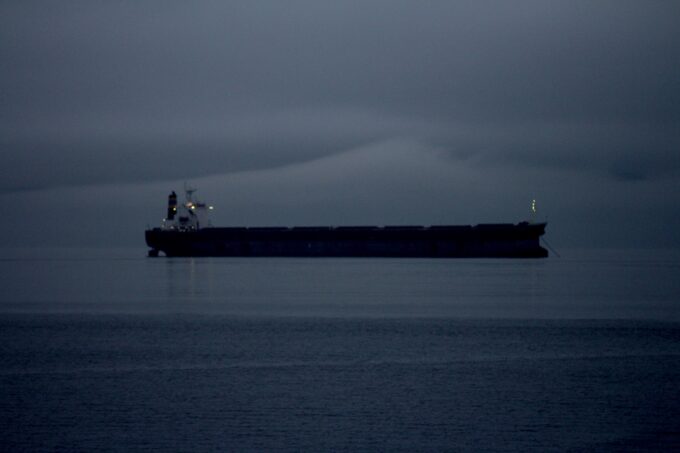
Trans-Pacific cargo ship at night, near Cape Disappointment, Washington. Photo: Jeffrey St. Clair.
The Blue Economy in African Coastal Waters
Just as vast tracts of global land have been acquired to extract fossil fuels (in the United States alone, Earthjustice, a nonprofit public interest environmental law organization, reports that “[t]he oil and gas industry has over 26 million acres of land under lease.” The same phenomenon is being duplicated in the sea. The well-being of more than 200 million Africans who depend on fisheries for food and nutritional security is at risk, CEO of WWF Kenya Mohammed Awer said in July 2023. Once corporate interests claim bodies of water as their own, they will likely become inaccessible to those who make their living from the sea and nearby coastal communities.
Industrial installations, such as crude oil platforms, establish control over the surrounding waters, ostensibly as security buffers. Fishermen who have tried to find more sea life in the high seas have reported that large parts of the continental shelf and beyond are off-limits because extractive industries have claimed and cordoned them off with controlled installations.
Unregulated industrial fishing in West African coastal waters, often carried out by foreign fleets, threatens fishermen’s livelihoods. According to “Fishy Networks: Uncovering the companies and individuals behind illegal fishing globally,” a 2022 report by the Financial Transparency Coalition, more than 40 percent of cases involving illegal, unreported, and unregulated (IUU) fishing by industrial vessels from January 2010 to May 2022 occurred in West Africa. More than one-third of global fisheries were overfished in 2019, mainly due to illegal fishing.
Access to healthy water bodies is becoming increasingly difficult by the day due to industrial installations and related pollution. Massive oil spills have been the result of different security forces at work, including blowouts at wellheads at Santa Barbara River, a fire at the Ororo-1 well (which erupted in 2020 in Nigeria and was still raging nearly a year later), explosions of floating production storage and offloading (FSPO) units; the blowing up of oil-laden vessels; and burning of bush refineries.
Paying to Pollute
In the current blue economy paradigm, privatization prioritizes profit above ecosystem health. Water is not viewed as a commodity in this construct, and the buying and selling of oceanic water and aquatic resources would be prioritized over other considerations.
The blue economy could allow polluters to pay to pollute by allowing bodies of water to be used as dumps for mine tailings and other pollutants. It could also open the space for speculators on water futures, thus raising the stakes against access to clean and safe water for the 4 billion people worldwide facing extreme water scarcity for at least one month every year.
Promise and Peril for Ocean Economy
An OECD report indicated a significant increase in ocean-related economic activities by 2030, saying that “[t]he new ‘ocean economy’ is driven by a combination of population growth, rising incomes, dwindling natural resources, responses to climate change and pioneering technologies.” The projections show that the global value added by ocean-based industries could grow from $1.5 trillion in 2010 to more than $3 trillion by 2030.
While the growth of the ocean economy does offer potential advantages for coastal communities, it’s essential to monitor the adverse outcomes that ocean-based economic development can also yield. These challenges can include the growth of existing economic disparities, the displacement of local communities and their means of livelihood, pollution, harm to environmental sustainability and biodiversity, and an infringement on human rights.
With all of these stressors connected to the exploitation of the oceanic ecosystem, safeguards must be implemented.
Physical capital and technology have been given such priority in the world economy that other critical factors like human resources and natural resources are ignored or reduced in significance, and there is no longer any real balance in sustainability.
The drive for profit above the health of the planet and its people leads to the transformation and, often, the destruction of environmental resources without regard to planetary or social limits.
For coastal communities, the ocean is not just an arena for economic activities but a space for culture, spirituality, and interactions with nature. Connections to the ocean are a way of life. The prevailing capitalist bent may dismiss this reality as an inefficient use of aquatic ecosystems. Yet, it highlights the origins of the polycrisis in our world today.
When governments and corporations decide what should be done, they often ignore the people closest to the water and the fact that they know more about what is necessary to protect it. It gets more troubling when the uninhabited deep sea is discussed. For example, in Nigeria, Shell Oil is selling off its onshore oil fields and moving operations to the deep sea, where there is limited oversight on the damage being done. Even if the harm being done in the deep sea stays out of sight, its results still affect everyone onshore. This is a major reason for the concern anywhere in the world that is near the water.
While some countries believe that opening their maritime territories to investment will improve their economies, they invite the destruction of irreplaceable resources.
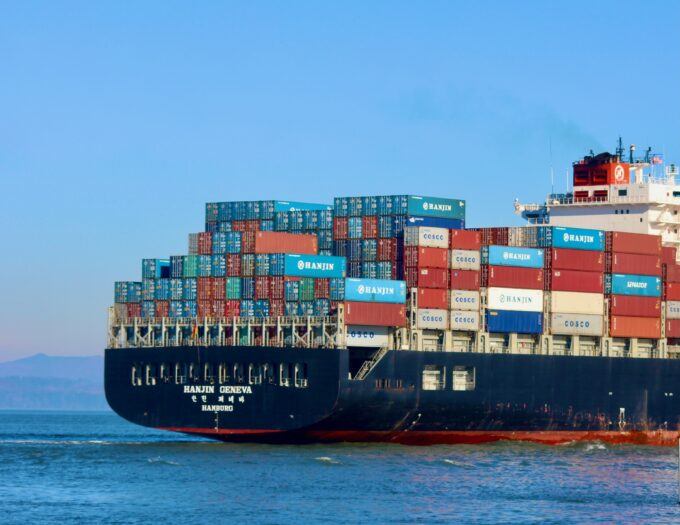
Trans-Pacific cargo ship enters the mouth of the Columbia River. Photo: Jeffrey St. Clair.
Norway Explores Deep Mining in the Seas
In January 2024, Norway’s Parliament voted to allow mining companies to search a large area of the country’s waters, approximately the size of Italy, for the minerals needed to build electric cars, mobile phones, and solar panels. “If you find the resources, and if you have the technology that shows that you can develop this with acceptable [environmental] impact, then you will have your green light,” said Walter Sognnes, CEO of the startup mining company Loke Marine Minerals, according to a January 2024 Wired article.
Other companies are also looking to exploit the Norwegian waters, with the startup Green Minerals expected to “extract copper from what’s known as seafloor massive sulfide (SMS) deposits, according to its CEO, Ståle Monstad,” added the article. Test mining is supposed to begin in 2028, but several technical challenges must be resolved. Deep-sea mining companies must transport mineral deposits 3 kilometers (approximately 1.9 miles) from the seabed to the surface. How the maritime ecosystem—corals, sponge grounds, and other sea life—will respond to the mining is unknown. Yet, on a positive note, mining companies are required to study the environmental impact before they are permitted to begin exploration.
Norway has changed its position on this issue in recent years. As co-chair of the Ocean Panel, it pledged to sustainably manage the world’s coastline by decarbonizing the shipping industry and regulating seafood production. The Ocean Panel, formed in 2018, comprised 14 governments responsible for 40 percent of the world’s coastlines.
Norway’s shift in allowing deep-sea mining occurred because a new government was elected in 2021. Outraged researchers have said that not enough is known about the deep-sea ecosystem to risk mining for minerals such as manganese and cobalt, used in batteries and other electronics. “In marine biology, our knowledge about the existence, function, and distribution of many species is either too poor or non-existent,” warned a group of scientists from the Norwegian University of Science and Technology and NTNU University Museum, both located in Trondheim, Norway.
When a relatively forward-thinking country like Norway promotes deep-sea mining, it raises concerns due to the region’s history of resistance to expanded offshore oil extraction. The damage to local economies, fisheries, and Indigenous peoples of the region has been demonstrated before, so it is worrisome that support for deep-sea mining seems to be increasing once again.
Deep Mining in U.S. Seas
According to the Nature article, “Five Priorities for a Sustainable Ocean Economy,” “[b]lue carbon” ecosystems of mangroves, seagrass beds, and salt marshes store carbon at up to 10 times the rate of terrestrial ecosystems.” For example, the article’s authors cite the successful restoration of 3,000 hectares (approximately 1,500 acres) of seagrass beds in Virginia lagoons along the U.S. eastern seaboard, sequestering about 3,000 tons of carbon annually.
However, there are proposals to rely on seaweed to capture carbon or iron filings, which could lead to enormous damage. Yet, most people are unaware of these initiatives or the potential disasters they can cause. The concept appears benign, but the unsustainable aspects aren’t adequately addressed in the public sphere. Moreover, the pursuit of blue carbon through mangrove protection or restoration portends the danger of sea grabbing, displacement of communities, or disruption of their livelihoods.
Assessing the Value of the Marine Ecosystem
Some argue that putting a price on the oceans’ value distorts the meaning of the blue economy as the right path forward. According to a 2023 report by the World Resources Institute, the blue economy is responsible for more than $1.5 trillion of the annual global economy.
Although a blue economy is often conceptualized as the “sustainable” management of aquatic and marine resources and ecosystems, actions other than economic profit or power are usually seen as unreasonable or not viable.
A 2015 report published by Nature estimated that the assets found in the global marine ecosystem—including fisheries, shipping routes, and tourism—have a total value of $24 trillion and generate an annual output worth $2.5 trillion. In 2022, employment in the marine economy grew by 5 percent in the United States, outpacing the overall economy (3.9 percent) in job growth.
Yet, the fundamental issue is that the concept of an “economy” has become so pervasive that people often assume that aquatic ecosystems are intended solely for capital accumulation through exploitation.
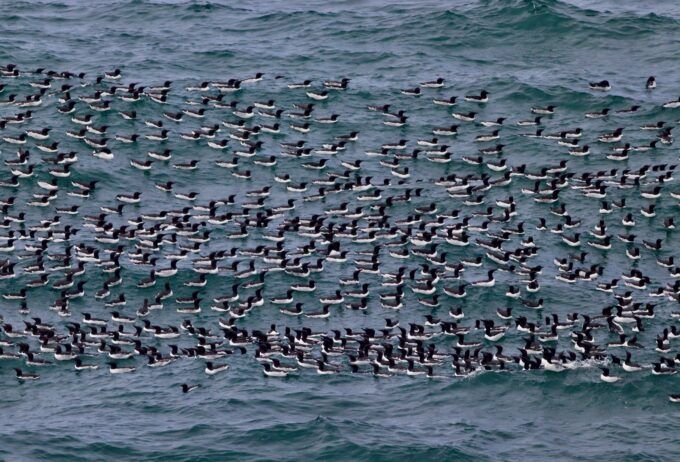
Common murres off Cape Perpetua, Oregon. Photo: Jeffrey St. Clair.
Protecting Marine Ecosystems
Local coastal communities must be mobilized. Forming alliances with fishermen, activists involved with natural rights, nonprofit organizations, and legal and political influencers will have to play an essential role in protecting the oceans. We must use all legal mechanisms to prevent threats to water bodies from corporations, governments, and other parties.
The world functions quickly, while political leadership in many regions tends to make strides on the path of least resistance, taking the most expedient way forward. It is a global responsibility to prevent profits from becoming the first priority for industry and political leaders, thereby maintaining the importance of natural resources and life below water.
The wars happening in the world today demonstrate that oceans and other waterways require protection. The massive destruction shows that appealing to the consciences of political leaders or the boards of global corporations is counterproductive. Grassroots activists and mass public awareness and mobilization, including litigation, can help to hold corporations, governments, and criminals accountable when official routes fail to protect the seas. The media can help expose ongoing marine destruction and unsustainable practices and motivate lawmakers to protect oceanic ecosystems. Destroying marine ecosystems can be viewed as an international crime. As harmful activities in the oceans threaten species, it may be considered a kind of genocide—ecocide, or the killing of Mother Nature.
Marine Protected Areas: More Action Needed
Marine Protected Areas (MPAs) include oceanic space for long-term conservation. Other areas could be estuaries, seas, and lakes. Such protected areas also cover rivers, creeks, swamps, and continental shelves.
As governments, corporations, and illegal actors exploit the open seas in a highly unregulated ecosystem, community-led MPAs represent a potential strategy for protecting the health of the Earth’s oceans. Simply marking an area as an MPA may not be a neutral exercise.
MPAs can have many names: marine parks, conservation zones, reserves, sanctuaries, and no-take zones. As of 2023, there were more than 5,000 MPAs worldwide, covering more than 8 percent of the ocean. MPAs have been established in various maritime sites, including the open ocean.
Most MPAs aim to protect marine habitats and the sea life they support. One of the best-known examples is the Galápagos Marine Reserve, which is about 1,000 kilometers (600 miles) off the west coast of South America and includes a variety of marine habitats like coral reefs and mangrove swamps, where trees grow directly in seawater. The waters around the Galápagos are home to about 3,000 plant and animal species. Some MPAs, on the other hand, focus on particular historical sites, like shipwrecks.
According to the Marine Conservation Institute, approximately 8 percent of the world’s waters are protected by some form of marine protection, with the island nation of Palau far out in front. Only nine countries have protected 10 to 30 percent of their waters, though only 2 percent have protected as much as 30 percent.
The UN’s World Database on Protected Areas documents MPAs submitted by nations. It reports that more than 15,000 MPAs safeguard an expanse of ocean covering more than 27 million square kilometers, equivalent to nearly 10.6 million square miles. In the U.S., marine protected areas cover 25 percent of the country’s waters.
Most African MPAs are in Eastern and Southern Africa, with a few in West and North Africa. Experts recommend that MPAs should be people-driven rather than financially driven. If the laws regulating MPAs come solely from the government, further details must be made clear to those involved in keeping these laws intact.
One example of these rules is the Chumbe Reef Sanctuary in Tanzania, established in 1992. This project continues to involve local communities in managing and monitoring marine resources. It has led to a significant recovery of degraded coral reefs and increased fish stock. This success is due to the involvement of local communities in the management of MPAs and the assurance of equitable stakeholding in the benefits derived from such conservation.
Another success story is the Bazaruto Archipelago National Park in Mozambique, established in 1971. It covers an area of 1,430 square kilometers (approximately 550 square miles) and contains a diverse range of marine habitats, including coral reefs, seagrass beds, and mangroves. This MPA has provided economic benefits to the local communities by supporting sustainable artisanal fishing and protecting the region’s biodiversity, including endangered species such as dugongs, turtles, and sharks.
Unless MPAs are instituted with the full consent and support of dependent coastal communities, they may be a means of shutting groups of people off from nature. Governments can protect forests without the consent of relevant parties in what is often called “fortress conservation.” This concept refers to the ability of some groups to map out and prevent others from going near designated parts of the ocean. In such instances, the blue economy could be considered a cause of many conflicts. This situation could arise if communities or commercial entities contend to control resources found in particular areas. Conflicts could also occur when MPAs are cordoned off with a military shield as “conquered” territories.

Sea lions and ocean trawlers, Astoria Harbor, Oregon. Photo: Jeffrey St. Clair.
Colonizing Nature
The concept of colonialism goes beyond the political control and exploitation of one nation by another; it also extends to our relationship with nature. The “colonization of nature” entails exploiting and transforming natural resources for economic gain without considering its socio-ecological impacts. This approach has contributed to many problems, including climate change, biodiversity loss, and armed conflict over resources.
Launched in 2018 and based in Nigeria, the School of Ecology (SoE) explores environmental and climate justice, agriculture, resource democracy, and overall socio-ecological transformation. The organization operates under the aegis of the Health of Mother Earth Foundation, an ecological think tank where I serve as the director. One SoE gathering was based on the MPA concept and the challenges of the idea of the blue economy. A people-driven MPA would place the fate of their aquatic ecosystems in people’s hands. Such a level of stewardship would ensure ecosystem protection and restoration where damage may occur.
The organization promotes the security and resilience of ecosystems as wielders of power and capital. Although many people see the promotion of the blue economy as a means of securing life underwater, as highlighted in the United Nations Sustainable Development Goals, this is often not the case.
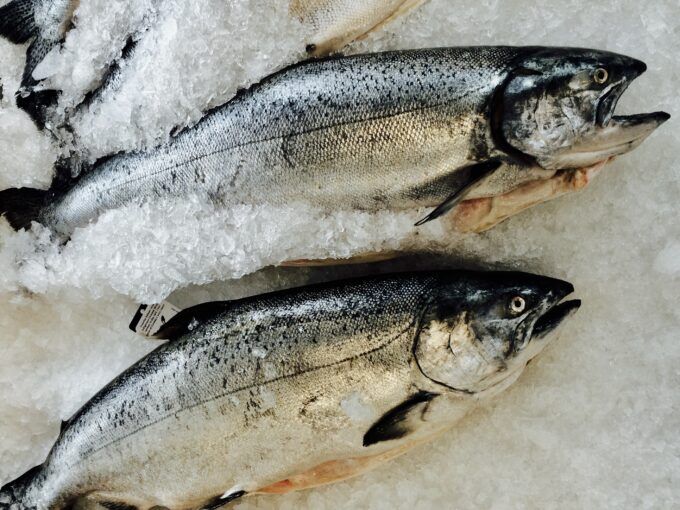
Freshly caught salmon from the Pacific, Newport docks, Oregon. Photo: Jeffrey St. Clair
Environmentalism From Below
The Gulf of Guinea has seen high pollution levels and environmental crimes. A high level of sea-based pollution, including plastic waste, in the Gulf of Guinea is traceable to the Niger Delta, and it is time for regional governments such as the Economic Community of West African States (ECOWAS) to declare an environmental emergency.
A commitment to such a declaration will go far in ensuring that the population of West Africa can rely on a safe environment to carry out their economic, socio-cultural, recreational, and spiritual activities. Environmentalism from below requires the reassessment of the false idea that environmental concerns are for those who have had their basic needs met and have the benefit of thinking about luxuries. Environmentalism from below requires those who depend on healthy ecosystems for their basic needs to stand up against attempts to appropriate their territories for exploitation by powerful and connected individuals, governments, and corporations. Humanity is outpacing nature and plundering ocean resources to the degree that we are preventing those resources from recovering naturally.
Establishing community-managed MPAs is a powerful strategy for safeguarding the health of our oceans and halting further decline, particularly when incorporated into a comprehensive management framework. These MPAs offer a compelling solution that will help to guarantee that the aquatic commons remain free of corporate and industrial exploitation and monopolies.
Optimally, if local, community-based managed MPAs were established in coastal waters worldwide, they would restore degraded areas, rebuild biodiversity, revive cultural practices, restore dignity, and reinvigorate local economies. While capitalism often sets rules globally, there are definite ways in which humanity can work together to liberate nature from the bottom up. The world’s oceans—and all species they support, including ours—depend on it.
This article was produced by Earth | Food | Life, a project of the Independent Media Institute.








